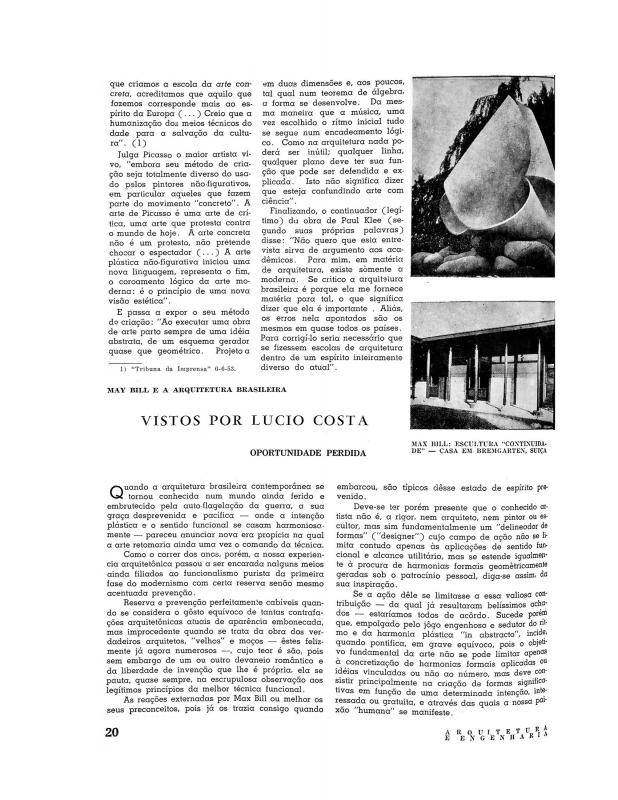The “Salão de 31”, held at the Escola Nacional de Belas Artes in Rio de Janeiro, was organized by architect Lúcio [Ribeiro Lima] Costa (1902?98) when he assumed leadership of the institution. It was the first attempt to examine “modern” issues within an academic environment. The Salão brought together new talents with those that arose from the Semana de Arte Moderna in 1922, provoking great consternation within the cultural scene of the time; although it also led to Costa’s resignation, the Salão caused profound transformation within the arts scene, among them, the creation of the future Salão Nacional de Arte Moderna.
Celso Antonio (1896?1984) is, without a doubt, one of the principal “modernist sculptors” working before the 1950s in Brazil. At the same, Costa—who was an architect, professor and public figure—was one of the chief facilitators of modernity in Brazil, and he stands out as a pioneer in the conservation of the historical and artistic patrimony of the nation. He served as coordinator for the team charged with organizing the MAS (Ministério da Educação e Saúde, 1936) project, which was focused on Brazilian modern architecture, and that also included the participation of [Edouard Jeanneret-Gris] Le Corbusier.
[For a complementary reading, see in the ICAA digital archive by Costa “1951: depoimento de um arquiteto carioca” (doc. no. 1110348); “A crise da arte contemporânea” (doc. no. 1110342); “Considerações sobre arte contemporânea” (doc. no. 1110999); “Uma escola viva de Belas Artes” (doc. no. 1075423); “Max Bill e a arquitetura brasileira vistos por Lúcio Costa: oportunidade perdida” (doc. no. 1110331); “Razões da nova architectura” (doc. no. 1110344); “Relatório do plano pilôto de Brasília” (doc. no. 1110343); and “A solução definitiva = The definitive solution” (doc. no. 1111008). See also the text written by Candido Portinari on the “Salão Lúcio Costa” (doc. no. 1111007)].









